Introduction to Email Bounce Back

What is an Email Bounce Back
An email bounce back, often referred to as a "non-delivery report" (NDR) or "bounce message," occurs when an email you've sent is rejected by the recipient's email server and returned to you with an explanation of why it wasn't delivered.
This can happen for various reasons, including an incorrect email address (hard bounce) or a full recipient's inbox (soft bounce). Essentially, the email bounce back indicates that your message could not be delivered as intended.
What is an Email Bounce Rate
The email bounce rate is a metric that quantifies the percentage of your sent emails that bounce back and fail to reach the recipients' inboxes.
It's a crucial indicator of the health and effectiveness of your email campaigns. A high bounce rate can affect your sender reputation, prompting email service providers to filter your communications as spam.
Types of Email Bounces
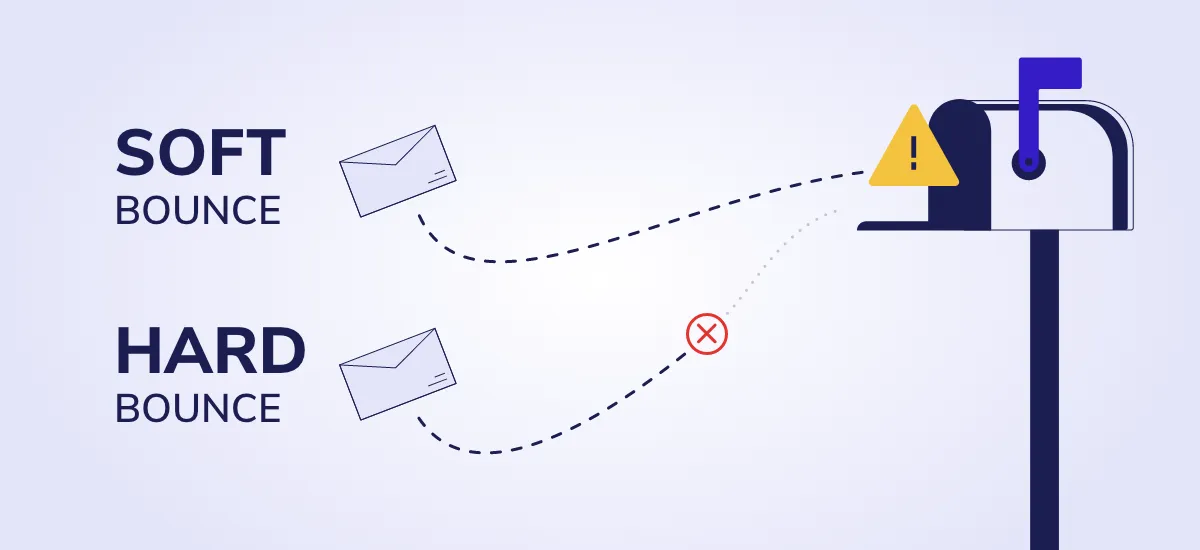
Email bounces are a common issue in email marketing, and understanding the types of bounces can help marketers refine their strategies and improve deliverability.
Email bounces are generally categorized into two main types, each indicating different issues and requiring specific actions to resolve.
Hard Bounces
- Hard bounces are the result of permanent delivery issues. They indicate that the email cannot be delivered for fundamental reasons.
- Understanding why hard bounces occur is crucial. For instance, about 10% of email addresses entered into any given database are incorrect.
- This high rate necessitates the use of robust verification processes before adding addresses to your mailing lists.
Soft Bounces
- Soft bounces are temporary issues that might resolve on their own, but they still need monitoring to prevent them from becoming chronic.
- Soft bounces typically resolve themselves, but consistent soft bounces from the same addresses may indicate a deeper issue.
- For example, an email server that frequently goes offline could be a sign of technical problems at the recipient’s end.
How to Calculate Email Bounce Back
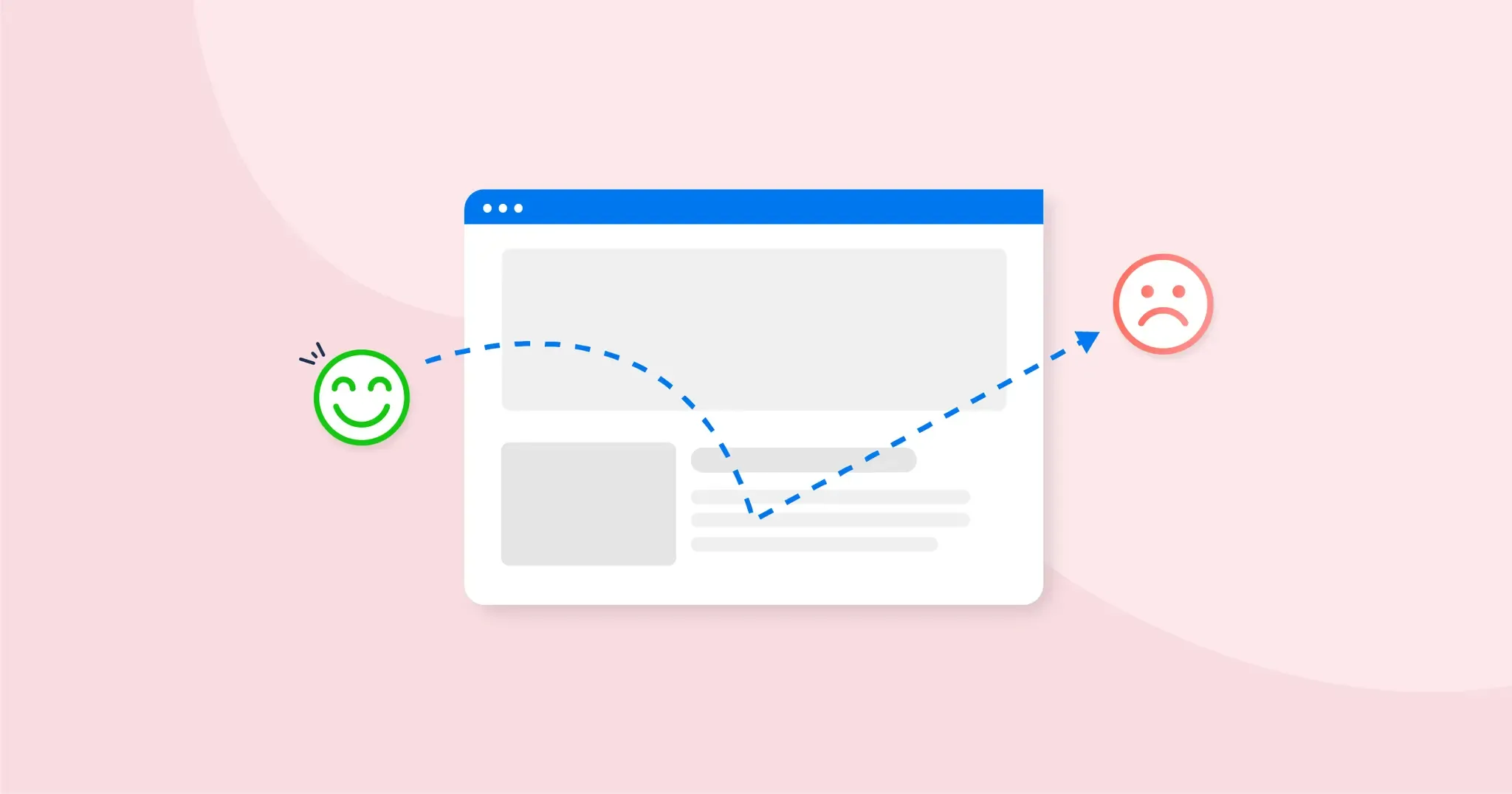
Calculating your email bounce rate is essential for assessing the health of your email marketing campaigns and identifying potential issues with your email list or sending practices.
Here’s how you can calculate the email bounce rate step-by-step, along with why it’s important and how to interpret the results.
Step-by-Step Guide to Calculating Email Bounce Rate
- Collect Data: First, you need to gather the total number of emails sent and the number of bounced emails from your email campaign. This data is typically available in the analytics dashboard of most email marketing platforms.
- Identify Types of Bounces: Separate the bounces into two categories: hard bounces and soft bounces. Hard bounces are caused by permanent delivery issues such as invalid email addresses, whereas soft bounces are usually temporary issues like a full inbox or a server being temporarily down.
- Calculate Total Bounces: Add up all the hard bounces and soft bounces to get the total number of bounced emails.
- Perform the Calculation: Use the formula to calculate the bounce rate:
- Bounce Rate=(Number of Bounced Emails/Total Emails Sent)×100
- This formula will give you the bounce rate as a percentage.

Example Calculation
If you sent 1,000 emails and 50 emails bounced back (30 hard bounces and 20 soft bounces), the bounce rate would be calculated as follows:
Bounce Rate=(50/1000)×100=5%Bounce Rate=(1000/50)×100=5%
Why Calculate Email Bounce Rate?
- Assess List Health: A high bounce rate may indicate problems with your email list, such as outdated or incorrect information.
- Improve Deliverability: By monitoring and minimizing your bounce rate, you can enhance your sender reputation with ISPs, improving overall deliverability.
- Refine Marketing Strategies: Understanding your bounce rate can help you refine your targeting and content strategies to better engage your audience.
Interpreting Bounce Rates
- Normal Range: Typically, a healthy bounce rate is below 2%. Rates between 2% and 5% might require attention, while anything above 5% is considered problematic and should be addressed immediately.
- Action Steps: If your bounce rate is high, consider cleaning your email list, using double opt-in processes to ensure email accuracy, and revising your segmentation and targeting strategies.
8 Reasons Why Email Bounces Back: Explained with Causes and Solutions
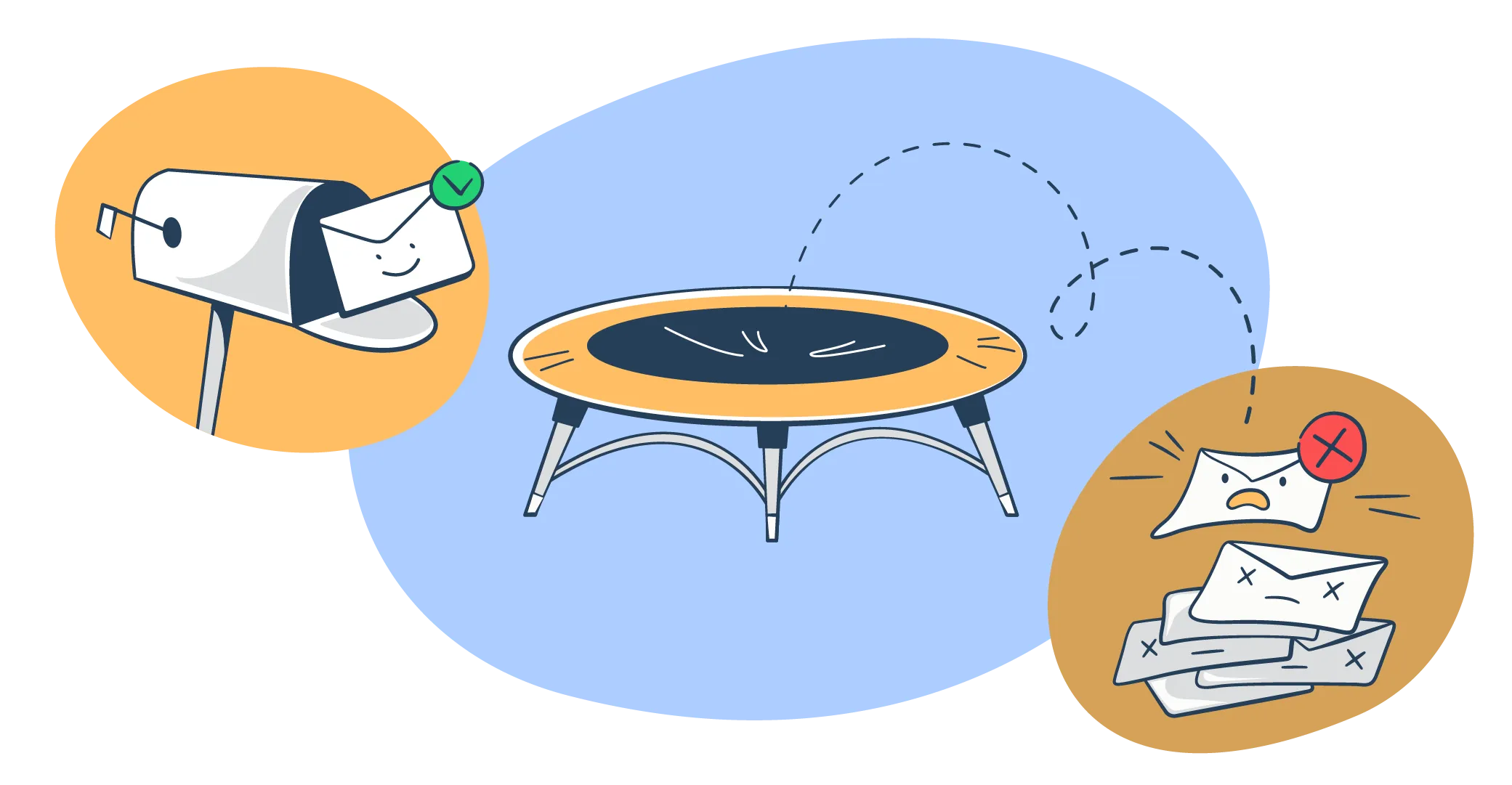
Email bounces can occur for a variety of reasons, often hindering the effectiveness of email marketing campaigns. Here are eight common reasons why emails bounce back:
1. Incorrect Email Address

Incorrect email addresses are a primary cause of hard bounces in email campaigns. These occur when the email addresses are either mistyped (e.g., "gamil.com" instead of "gmail.com"), fabricated, or outdated. Errors may be introduced during data entry or because the recipient changed their email provider, leaving the old address inactive. Sending emails to these addresses results in failures because the mail servers recognize them as non-existent.
How to Overcome It:
- Email Verification Tools: Utilize email verification services at the point of capture to ensure that email addresses are correctly formatted and valid. This can reduce errors due to typos or common misspellings.
- Regular List Cleaning: Implement routine cleaning of your email list to remove outdated or inactive email addresses. This not only reduces bounce rates but also improves campaign metrics and efficiency.
- Double Opt-In Procedures: Encourage a double opt-in process for subscribers. This method sends a confirmation email to the new subscriber to verify their intent and validates the email address in the process.
- Educate Your Audience: Clearly communicate the importance of accurate information when your users are entering their email addresses, possibly providing examples or automatic format checks during entry.
2. Full Mailbox
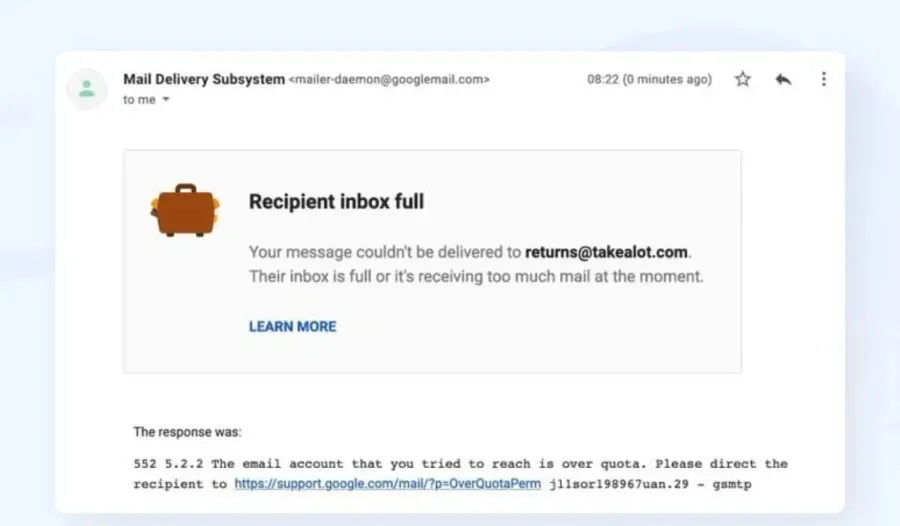
A full mailbox occurs when the recipient’s email inbox has reached its capacity and can no longer accept new emails. This situation typically results in a soft bounce, as the issue may be temporary. If the recipient does not clear space in their inbox, future emails may also bounce back.
How to Overcome It:
- Segment and Prioritize Your Emails: Use segmentation to prioritize high-engagement recipients who are less likely to have full mailboxes due to regular email activity. This targets your campaigns towards more active and engaged lists.
- Monitor and Adapt Send Frequency: If you notice a trend in bounce rates due to full mailboxes, consider adjusting the frequency of your email sends. Reducing the number of emails or optimizing send times can help avoid overwhelming recipients’ inboxes.
- Resend Important Emails: For critical communications, set up protocols to resend emails that were initially returned due to a full mailbox. Monitor the status, and try resending after a period—this gives the recipient time to clear their inbox.
- Educational Content in Emails: Inform and educate your subscribers about managing their inbox efficiently through occasional tips within your emails. This can help them keep their inbox under control, reducing the chances of bounces for future emails.
3. Server Issues
Server issues that cause email bounces can include server outages, maintenance, or temporary overloads, which prevent the recipient’s email server from processing incoming emails.
These are typically categorized as soft bounces because they are often temporary problems. If the server remains down over an extended period, subsequent send attempts may fail permanently.
How to Overcome It:
- Monitoring Tools: Use email monitoring tools that provide real-time feedback about the status of your sent emails. These tools can alert you to delivery problems that may be caused by server issues at the recipient's end.
- Flexible Resend Policies: Implement policies to automatically retry sending emails that initially failed due to server issues. Adjust the timing of these retries to allow the recipient's server time to resolve any temporary issues.
- ISP Relationships: Maintain good relationships with Internet Service Providers (ISPs) and email service providers to get timely updates about any widespread issues affecting email delivery.
- Adaptive Email Infrastructure: Ensure that your email infrastructure is robust and can adapt to different conditions. Using multiple IP addresses or fallback servers can help manage load and mitigate the impact of server issues.
4. Blocked by Email Server
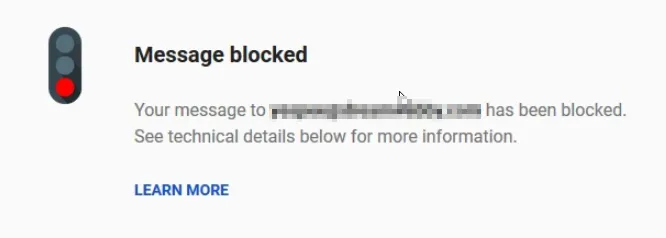
Emails can be blocked by recipient email servers for several reasons, such as the sender’s IP being blacklisted, emails marked as spam, or sending practices that violate the server’s policies.
This is a hard bounce and can severely impact your sender reputation, making it more difficult for other emails to get through.
How to Overcome It:
- Maintain Sender Reputation: Ensure your sending practices adhere to best email marketing practices. Regularly monitor your IP reputation and take steps to remove your IP from blacklists through services like SenderScore or MXToolbox.
- Engagement Practices: Improve engagement by sending relevant, personalized content to recipients who have opted in and are active. High engagement reduces the likelihood of being marked as spam.
- Feedback Loops: Set up feedback loops with major ISPs. This allows you to identify which emails are being marked as spam by recipients, giving you a chance to clean your lists and adjust your strategies accordingly.
- Authentication Protocols: Use authentication protocols like SPF, DKIM, and DMARC to verify your emails. These protocols show email providers that your emails come from a verified source, reducing the likelihood of being blocked.
5. Email Size Too Large

An email that exceeds the size limit set by the recipient's email server will bounce back. This size limit varies by email service providers but generally ranges from 10 to 25 MB.
Large emails may include high-resolution images, attachments, or extensive HTML coding. When an email's size is too large, it can be rejected outright by the server as it could strain the server's processing capabilities or quickly fill the recipient’s inbox.
How to Overcome It:
- Optimize Email Content: Reduce the size of images using image compression tools and limit the use of heavy HTML elements or unnecessary attachments. Consider using links to content hosted online rather than embedding or attaching it directly to the email.
- External Hosting for Large Files: For essential large files, use cloud storage services like Google Drive or Dropbox, and include a link in the email instead of attaching the file directly.
- Awareness of Limits: Educate your marketing team about the common size limits for emails and implement checks in your email marketing platform to alert the sender if the email exceeds these limits before dispatch.
- Segmentation and Testing: Test emails for size and deliverability across different email service providers to understand how they handle varying sizes and adjust your tactics accordingly.
6. Auto-Reply/Out-of-Office Settings

While technically not a "bounce," emails sent to a recipient who has set an auto-reply (such as an out-of-office notification) can sometimes be misinterpreted by email marketing tools as bounces.
This misclassification happens because the auto-reply is sent back as a response to the sender, similar to how a soft bounce would be reported.
How to Overcome It:
- Advanced Email Filtering: Improve your email marketing software's ability to distinguish between actual bounces and auto-replies. This can involve adjusting the tool’s settings or updating its algorithms.
- Engagement Tracking: Track engagement over time to identify patterns that distinguish genuine bounces from auto-replies. For instance, if an email address consistently sends back auto-replies, it might be worth investigating further or temporarily pausing sends to that address.
- Resend Strategy: Develop strategies for resending important emails once the recipient is back. Monitoring auto-replies can give insights into when they’ll be available again.
- Manage Expectations: Clearly communicate within your organization about the impact of auto-replies on campaign metrics and the difference from true bounces to avoid misinterpretation of campaign success.
7. Spam Content
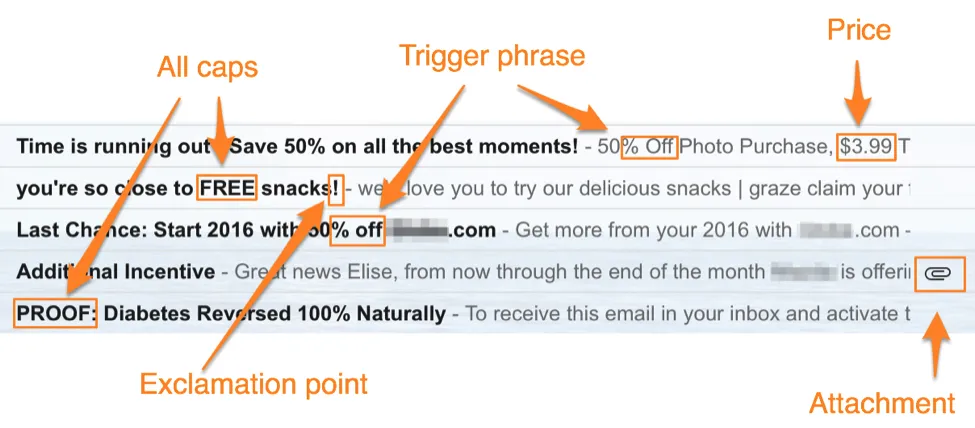
When an email contains content that triggers spam filters, it can be automatically rejected or sent to the spam folder by the recipient’s email server.
This issue might arise due to the use of certain trigger words (like "free", "guarantee"), overly promotional language, or a high frequency of calls to action. Additionally, a lack of personalization or emails that do not comply with CAN-SPAM Act regulations can also lead emails to be categorized as spam.
How to Overcome It:
- Content Review and Optimization: Regularly update your email content guidelines to avoid known spam triggers. Utilize A/B testing to identify which content variations perform better and are less likely to be marked as spam.
- Maintain a Good Sender Reputation: Ensure your sending practices align with best practices, such as maintaining a consistent send frequency and volume. Use a dedicated IP if possible to isolate your sender reputation from the actions of others.
- Engagement Strategies: Increase recipient engagement by personalizing emails, segmenting lists to target specific subscriber groups more accurately, and providing clear, valuable content that encourages opens and interactions.
- Compliance with Email Regulations: Adhere strictly to email marketing laws and guidelines like the CAN-SPAM Act, which requires a clear way for recipients to unsubscribe from your list, among other requirements.
8. Domain Not Found
Emails can bounce back if they are sent to a domain that no longer exists or is temporarily unavailable due to DNS issues.
This can occur if a business closes down or changes its domain name without forwarding the old domain, or if there are DNS configuration errors.
How to Overcome It:
- Regular Email List Verification: Regularly verify the validity of the email addresses in your database, focusing on the domain names to ensure they are still active and correct. This can be efficiently managed through automated tools that check domain status.
- Prompt Updates from Subscribers: Encourage subscribers to update their contact details regularly, possibly incentivizing this behavior to enhance response rates.
- Real-Time Validation at Point of Capture: Implement real-time email validation during the sign-up process to catch and correct errors immediately, before they enter your email list.
- Monitor Domain Status: Use tools to monitor the status of domains frequently used in your email lists, especially if you are sending B2B communications where company changes are more common
How to Identify and Understand Bounce Back Codes
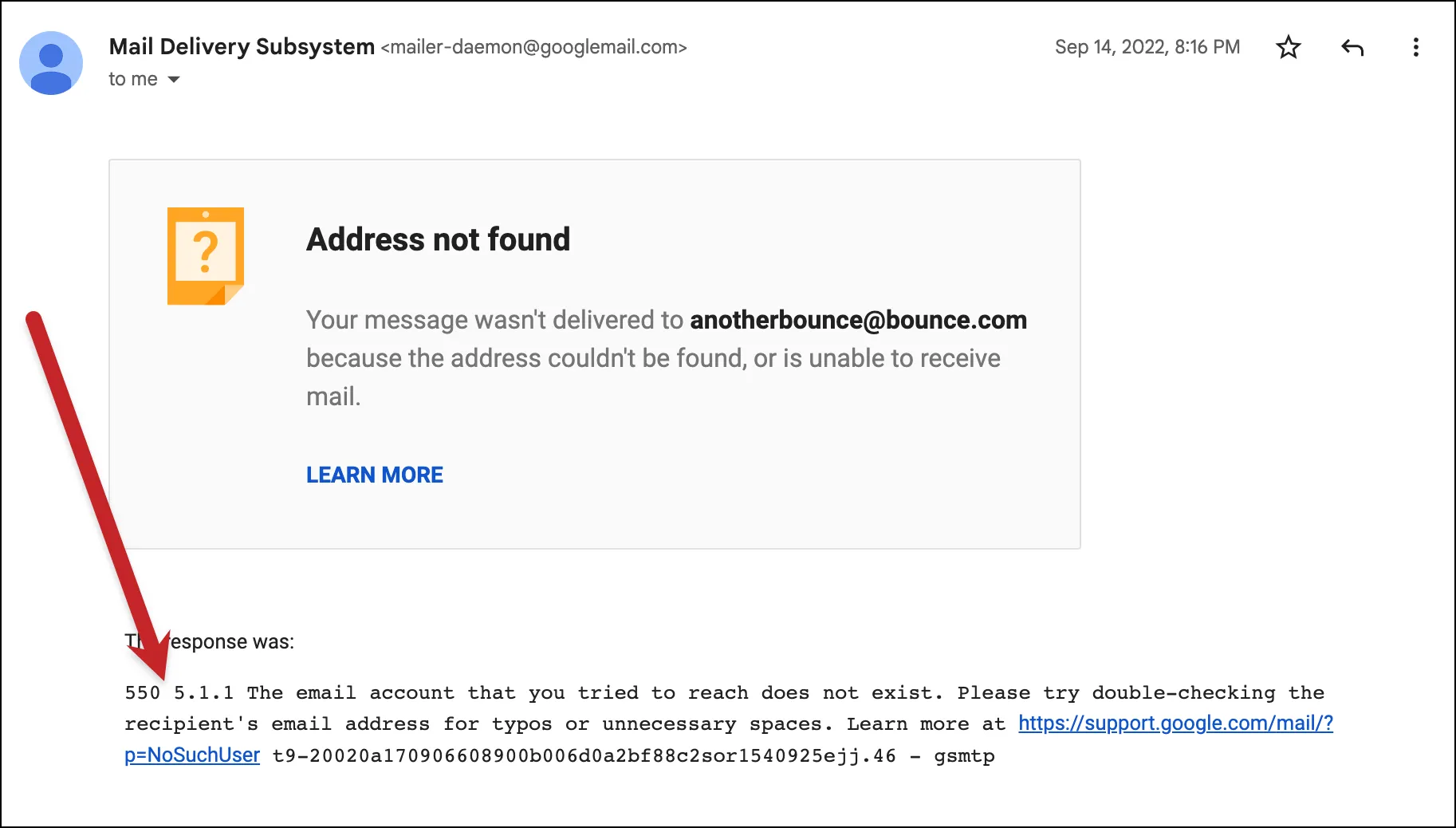
Understanding bounce back codes is crucial for managing email campaigns effectively, as these codes provide specific reasons why an email failed to be delivered.
Here’s a guide on how to identify and interpret these codes to improve your email deliverability.
Identifying Bounce Back Codes
Bounce back codes are typically found in the headers or the body of the bounce back messages you receive when an email is not successfully delivered.
These codes are standardized to some extent by the Simple Mail Transfer Protocol (SMTP), but they can vary depending on the email server's configurations.
Where to Find Bounce Back Codes:
- Delivery Status Notifications (DSNs): These system-generated emails include detailed information about the status of your email delivery. They often contain a field called "Diagnostic-Code" which is where the bounce back code is listed.
- SMTP Reply Codes: During the email sending process, SMTP servers communicate back-and-forth, and if an email is rejected, the SMTP server will issue a reply code indicating the reason for rejection.
Understanding Bounce Back Codes
Bounce back codes can be classified into different categories based on their first digit:
- 2xx Success Codes: These codes indicate that the email was successfully accepted by the server.
- 4xx Temporary Failure Codes: These indicate a transient error that may be resolved by itself or might require a resend of the email. Common causes include a full mailbox or a temporarily unavailable server.
- 5xx Permanent Failure Codes: These are indicative of a permanent error and mean that the email was not delivered and should not be retried without rectification. Common reasons include non-existent email addresses or domain names.
Common Bounce Back Codes and Their Meanings:
- 550 5.1.1: The recipient email address does not exist. You should remove this address from your mailing list.
- 451 4.4.1: There's a temporary problem with the recipient's server. You can try resending the email after some time.
- 552 5.3.4: The message size exceeded the recipient server's maximum permitted size. Consider reducing the size of the email.
- 554 5.7.1: The email is rejected due to a spam filter or security policy. Review your email's content and your server's security settings.
How to Use Bounce Back Codes to Improve Deliverability
1. Analyze Bounce Patterns: Regular analysis of bounce codes can help identify patterns or recurring issues with certain domains or recipient servers.
2. Clean Your Email List: Use the codes, especially the 5xx types, to clean your email lists of addresses that continually cause bounces.
3. Adjust Email Practices: Modify your email content, size, and sending practices based on the specific codes you frequently encounter. For example, if you get many 552 codes, start compressing images or splitting large campaigns into smaller segments.
4. Improve Engagement: Use bounce codes as feedback to improve email engagement strategies. For instance, repeated bounces from a particular domain might indicate a need to warm up your IP address for that domain specifically.
Relationship Between Winback Email Campaign and Email Bounce Rates
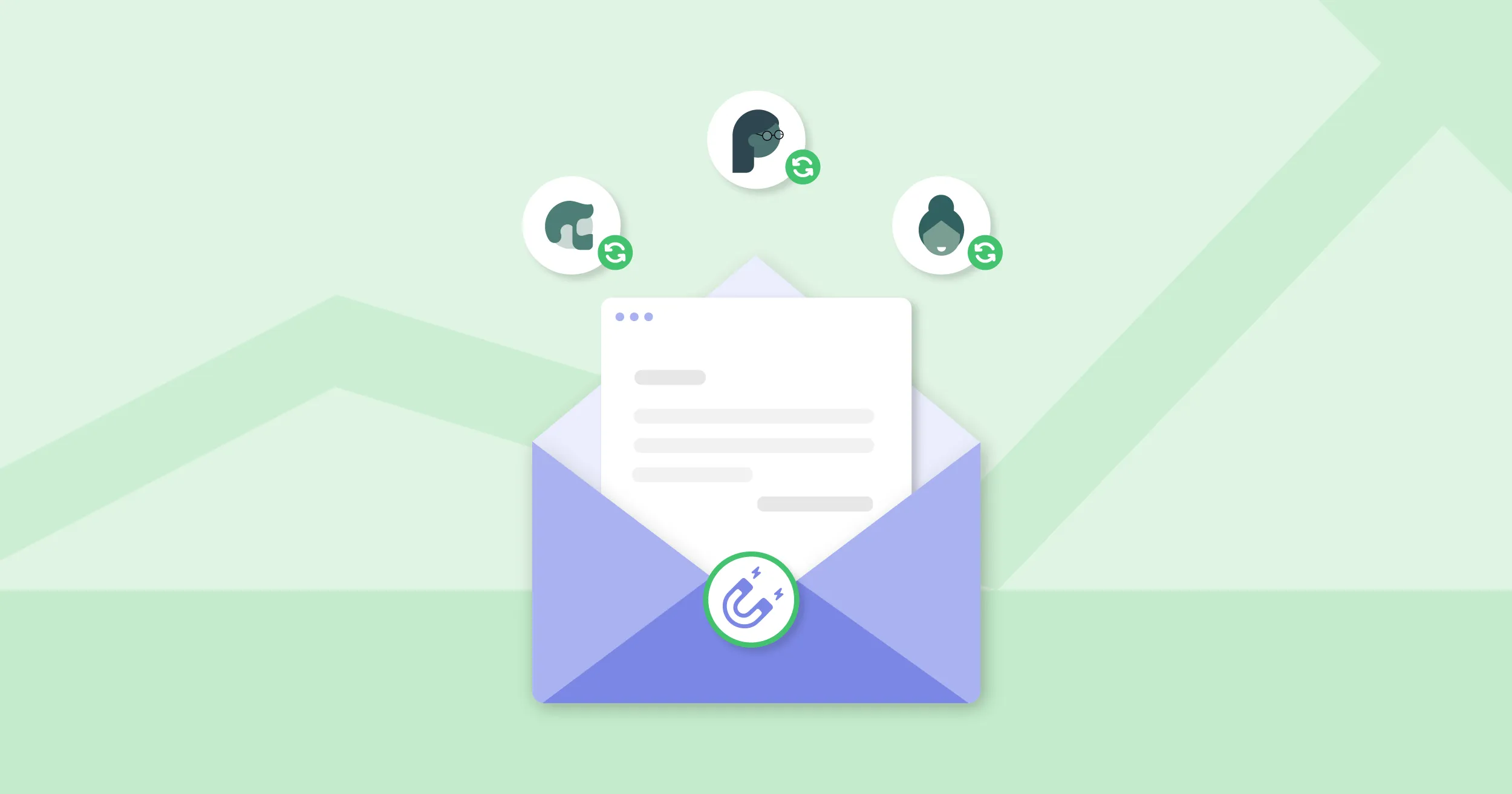
The relationship between winback email campaigns and email bounce rates is critical in understanding the effectiveness of your email marketing efforts, particularly when you are trying to re-engage inactive or lapsed customers. Managing this relationship effectively can significantly impact your overall marketing strategy’s success.
Understanding Winback Email Campaigns
Winback email campaigns are targeted initiatives designed to re-engage customers who have stopped interacting with a brand or service. These campaigns aim to remind customers of the value the brand offers, possibly enticing them back with special offers or updates about new products or services.
Given that the targets of these campaigns are often subscribers who haven't interacted with the brand in a while, there's a heightened risk that many of the email addresses in the campaign might have become inactive or invalid over time.
Impact of Email Bounce Rates on Winback Campaigns
Email bounce rates measure the percentage of sent emails that could not be successfully delivered to the recipient's inbox. High bounce rates in a winback campaign can indicate several underlying issues, such as:
- Outdated Email Lists: This includes incorrect email addresses or domains that no longer exist. Customers who have not engaged for an extended period might have changed their email addresses or abandoned old email accounts, leading to higher bounce rates.
- Poor List Hygiene: If email lists are not regularly cleaned and updated, they are likely to contain many invalid addresses, which directly contribute to high bounce rates.
Strategies to Improve Win back Campaigns and Reduce Bounce Rates
1. Regular List Cleaning
To effectively manage bounce rates, regularly clean your email lists to remove non-deliverable emails. This not only helps in reducing bounce rates but also improves the overall health of your email marketing efforts.
2. Segmentation
Use data-driven insights to segment your lists based on engagement levels. For instance, separate users who have recently interacted with the brand from those who have been inactive for an extended period. This allows for more targeted and personalized winback strategies.
3. Re-engagement Incentives
When crafting winback emails, include compelling offers such as discount codes, exclusive access, or personalized recommendations. These incentives can make your winback campaign more appealing and reduce the likelihood of emails being ignored or marked as spam.
4. Use Double Opt-In
When customers re-engage, using a double opt-in can confirm their interest and validate their email addresses. This process helps maintain a cleaner, more effective email list.
5. Email Validation Tools
Before launching a winback campaign, use email validation tools to verify the addresses in your list. This preemptive action can significantly decrease the bounce rate by filtering out invalid addresses.
6. Monitor and Adjust
Continuously monitor the performance of your winback campaigns. Pay special attention to metrics like open rates, click-through rates, and bounce rates. Use this data to tweak your strategies, improving both the effectiveness of the campaign and the health of your email list.
Win Back Email Examples
Creating effective win back emails is crucial for re-engaging past customers and reviving their interest in your products or services. Below are a few examples of win back email campaign that can be tailored to fit different business models and customer segments. Each win back email example focuses on re-engaging customers by addressing their potential needs and offering incentives to return.
Example 1: Retail
Subject Line: We've Missed You! Enjoy 20% Off Your Next Purchase 🛍️
Example 2: Subscription Service
Subject Line: Come Back and See What You've Been Missing!
Example 3: SaaS (Software as a Service)
Subject Line: Your Free Upgrade Awaits! Rejoin [Product Name] Today
Key Points for Effective Win Back Emails
- Personalization: Use the customer’s name and past purchase history to make the email feel more personal and relevant.
- Incentives: Offer a clear, attractive incentive to encourage customers to re-engage with your brand.
- Urgency: Create a sense of urgency with time-limited offers.
- Updates: Inform them about new features, products, or improvements since they last engaged.
- Clear Call to Action: Include a straightforward and compelling call to action (CTA) that makes it easy for them to take the next step.
Best Practices to Reduce Your Email Bounce Rate
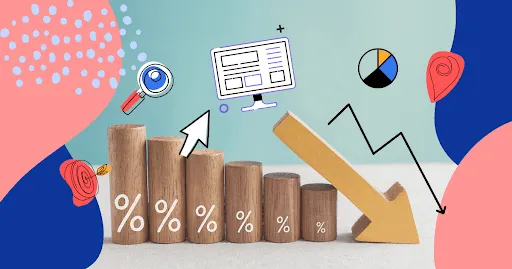
1. Segment Your Audience
Tailor your communication by segmenting your email list. This allows you to send more targeted, relevant messages. For example, you can separate disengaged customers from repeat customers and tailor your messaging to re-engage those who may have lost interest.
2. Re-engage Inactive Customers
Implement strategies specifically designed to re-engage customers who haven't interacted with your brand in a while. Win back email campaigns can be particularly effective here, offering special incentives or messages that remind past customers of the value your brand offers.
3. Optimize Email Frequency
Sending too many emails can lead to higher unsubscribe rates and disengagement. Conversely, sending too few emails can make your customers forget about your brand. Find the right balance to keep your loyal customers informed and engaged without overwhelming them.
4. Implement a Double Opt-in Process
This process requires new subscribers to confirm their email address before being added to your mailing list. A double opt-in helps ensure that subscribers genuinely want to receive emails from you, which can enhance customer loyalty and reduce bounce rates.
5. Verify Email Addresses
A common cause for email bounces is an invalid email address. It's essential to ensure that the email addresses in your mailing list are correct and active.
This can be done through automated tools that verify email addresses before sending messages. Regular maintenance of your email list helps remove invalid entries and reduces bounce rates.
6. Analyze Bounce Messages
Most email platforms will provide a bounce-back message that explains why an email was not delivered. Common reasons include the recipient’s mailbox being full, the server being down, or the recipient’s email server blocking delivery.
Analyzing these messages can provide specific insights into what went wrong and guide you on how to fix it.
7. Check Email Sending Practices
Poor sending practices, such as sending high volumes of emails in a short span, can lead to your domain being blacklisted by ISPs. To avoid this, ensure that your email sending patterns are consistent and that you respect sending limits set by your email platform.
8. Review Email Content and Format
Sometimes, the content or format of your emails can trigger spam filters or other blocking mechanisms on the recipient's end.
Avoid using overly promotional language, excessive links, or attachments that can raise flags. Testing your emails through different spam checkers before sending them out broadly can help identify and rectify potential issues.
9. Engage with Past Customers
If you're facing high bounce rates particularly with emails sent to past customers, it might be due to outdated or abandoned email addresses.
Re-engaging these customers through other channels and encouraging them to update their contact information can help regain lost contacts and reduce future bounces.
10. Implement Sender Policy Framework (SPF) and DomainKeys Identified Mail (DKIM)
These technologies help verify your domain identity and improve email deliverability. By implementing these, you can reduce the likelihood of emails being rejected.
11. Recover Lost Customers
Email bounces can mean lost opportunities, especially if they involve key communications or promotional offers.
When an email address consistently bounces and you've verified that it’s no longer valid, consider alternative ways to reach out to the lost customer, such as through social media or a phone call, to maintain that relationship and possibly update their email information.
Concluding Thoughts
In conclusion, understanding and preventing email bounce backs is essential for maintaining the effectiveness of your email marketing campaigns.
By recognizing the types of bounces and their causes, and implementing strategies to minimize them, you can significantly improve your email deliverability. This proactive approach not only enhances your sender reputation but also helps ensure that your messages reach your intended audience, maximizing your marketing efforts and maintaining valuable customer connections.
Further Reading
Further enhance your understanding of email marketing and improve your campaign effectiveness with this selection of insightful articles from Aloré's blog. These resources are specifically chosen to complement and expand your knowledge on various aspects of email management and optimization. They are ideal for marketers at any level seeking to refine their skills and strategies:
- Understanding Email Bounces: Explore the reasons behind email bounces and how they affect your marketing efforts. Gain insights into different types of bounces and their implications on your campaigns. Learn More.
- Using an Email Checker: Discover the benefits of using an email checker tool to ensure the accuracy and validity of your email lists, reducing bounce rates and improving deliverability. Read Further.
- Preventing Emails from Going to Spam: Learn techniques to prevent your emails from being marked as spam, enhancing the chances of reaching your recipient's inbox. Explore Now.
- Improving Open Rates for Email Campaigns: Understand the factors that influence email open rates and find out how to optimize your subject lines and content to boost engagement. Dive Deeper.
- How to Validate Email Addresses: Get familiar with methods and tools for validating email addresses before adding them to your marketing database to maintain list health and effectiveness. Discover More.









